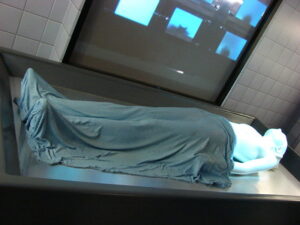A recent opinion piece in Forbes proclaims that traditional post-secondary education is pretty much dead. In its place, the author opines that students can pick and choose from among thousands of online courses and simply stitch together the post-secondary education they need for whatever it is they want to do.
It’s a nice fantasy, but education has never worked that way the past and it’s not going to work that way in the future. The author, Dr. John Mitchell, the CEO of IPC – an electronics trade association – posits that people should want to learn physics from Richard Feynman, based on his old lectures from CalTech. The author neglects to point out that Feynman died in 35 years ago, and that while listening to a Feynman lecture might be enlightening, it’s not really the same thing as learning physics, especially when you’re starting at Square One.
Authentic education relies on teachers and students who are simultaneously and mutually available and engaged in the subject matter. A teacher cannot teach a student who is not ready to learn any more than a student can learn from a teacher who delivered and recorded a lecture five years earlier.
There is little doubt in my mind that pre-recorded lectures might be “efficient” from a delivery perspective, but they amount to “mailing it in” from where the student sits. If the teacher (or more likely, the institution) will not engage the student and provide a learning environment in which the student and teacher are mutually available to each other, why should the student make the effort to self-teach? What exactly is the student paying for in this case?
Post-secondary education has to be better than it is
I have heard horror stories from higher education faculty members who have faced orders to place their materials online, record their lectures, and step back while someone else attempts to engage the student when a question arises. At the same time, I have watched students struggle to learn complex subjects from video lectures, and when they submit a question to the “instructor” the first response is, “Did you watch the video?” (“Yes.” Now what?)
The problem here, of course, is that a pre-recorded lecture does not contemplate all the questions that a student might raise. An example in a video may not help a student understand a variation in a calculus problem, or piece of software code. It cannot address changes that may have occurred in the learning environment after the recording is in the can.
Video instruction is limited to what the instructor did in that space at that time. It leaves no room for exploration, variation, or even authentic evaluation of the student’s understanding of the material.
Even worse, colleges and universities have adopted the notion that skipping the textbook is somehow the solution to exorbitant textbook costs. And when a college or university combines Professor Max Headroom with “just use whatever resources you can find,” it’s no wonder that students either end up with a defective understanding of the material they’re supposed to learn, or they simply give up and walk away.
And when this canned approach to education trickles down into K-12 schools, it’s no wonder that students have had their fill of “education” by the time they turn 18.
Technology may provide the tools to create a lousy educational experience, but just because you can do something doesn’t mean you should.
Photo Credit: Terry Robinson



















